Founder Patterns
The main difference between experienced and less experienced founders is that they have larger repertoire of patterns to refer to. Call them frameworks, mental models, whatever.
For example, when the initial excitement fades, beginners start to panic but experienced founders know that this is just the usual trough of sorrow. They greet it like an old friend and stay focused.
And the good news is that you don’t have to figure out everything yourself. You don’t have to analyze thousands of companies or founder biographies.
Instead, you can simply upload the patterns others have identified directly into your brain.
Here are the one’s I find repeatedly useful:
Unfair Advantages
Unfair advantages exist.
Instead of whining about how unfair the world is, you’re better off focusing on your own unfair advantages and coming up with a plan to add more to your repertoire.
The Black Box
“Whenever I have a product or service idea, or someone brings one up, my first move is always to write a sales letter to one person trying to sell them the idea.
I imagine myself standing in front of them with a big black box behind me and saying: “If you pay me $X, then there is something in this box that will create outcome Y.”
WP Curve, a business I profiled in the book, started by the founder, Dan, saying “If you pay me $69 a month, I’ll fix all your WordPress website problems.” No one cared what was inside the black box (or that it changed over time) as long as the problem continued to be solved.
I can try to sell that outcome to people even if the box is empty and save myself all the trouble of actually making whatever I think should go in the box.
It also forces me to clarify the most important elements – exactly who the product/service is for and the benefits to that person so I know what I’m trying to achieve.” - Taylor Pearson
Distribution follows a power law
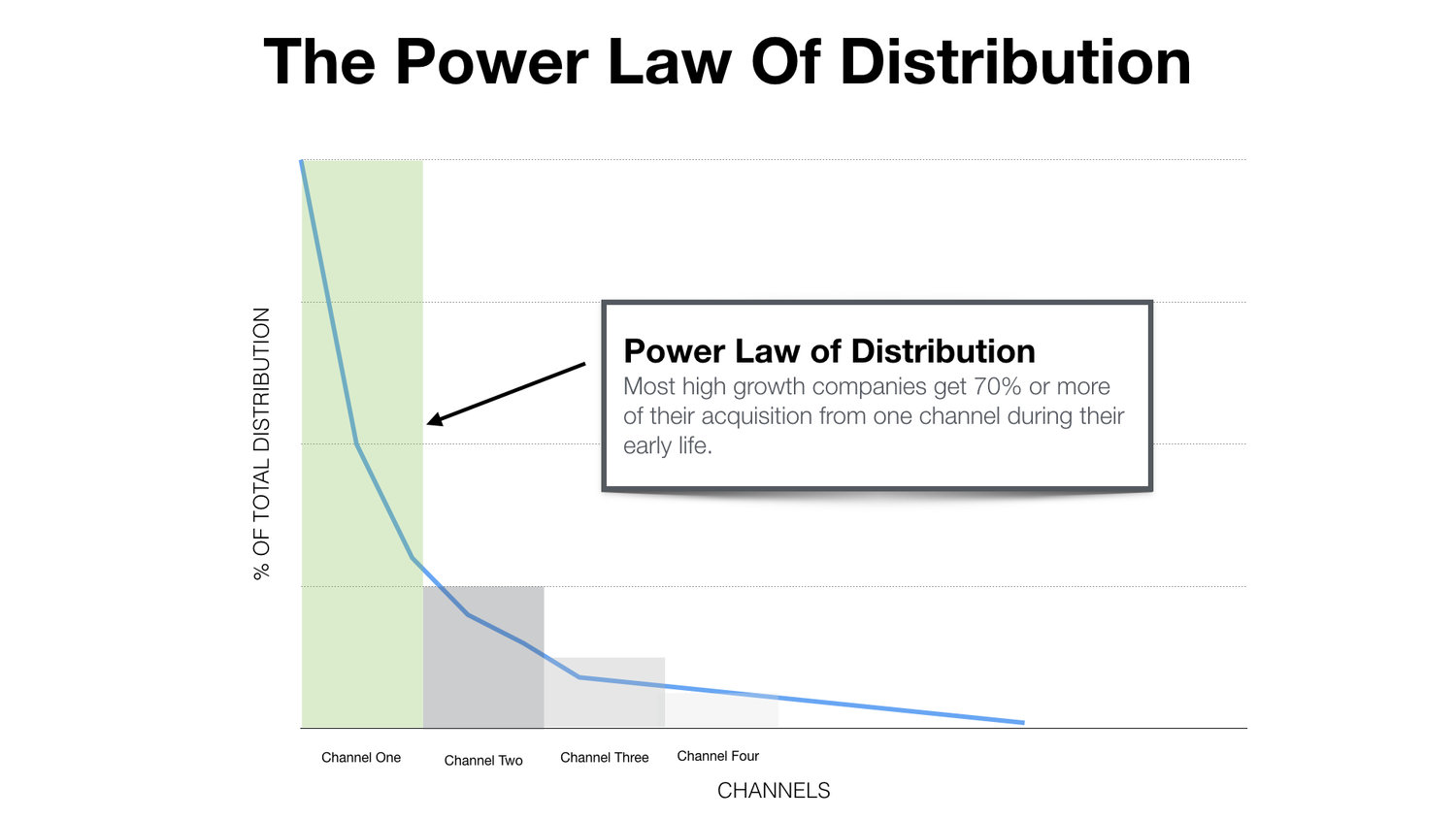
Image Credit: Brian Balfour
“You probably won’t have a bunch of equally good distribution strategies. Engineers frequently fall victim to this because they do not understand distribution. Since they don’t know what works, and haven’t thought about it, they try some sales, BD, advertising, and viral marketing—everything but the kitchen sink. That is a really bad idea. It is very likely that one channel is optimal. Most businesses actually get zero distribution channels to work. Poor distribution—not product—is the number one cause of failure. If you can get even a single distribution channel to work, you have great business. If you try for several but don’t nail one, you’re finished. So it’s worth thinking really hard about finding the single best distribution channel.” - Peter Thiel in Zero to One
High Agency vs. Low Agency

“High Agency is a sense that the story given to you by other people about what you can/cannot do is just that - a story. And that you have control over the story. High Agency person looks to bend reality to their will. They either find a way, or they make a way. Low agency person acepts the story that is given to them. They never question it. They are passive. They outsource all of their decision making to other people.” - George Mack
High agency is directly linked to acting without asking for permission.
The Feedback Trap
When you ask for feedback in the wrong way, most people will lie to you (with zero evil intent).
Most people are afraid to hurt your feelings and will tell you “this is a cool idea” even if it isn’t. They will tell you about problem’s they would like to have solved, but when you dig a bit deeper (e.g. by asking “What have you already tried to solve it?”), you discover that they would never pay for a solution as the problem is not painful enough.
A great book on the topic is The Mom Test by Robert Fitzpatrick.
Progress requires failed experiments
“Sir Isaac Newton spent decades studying alchemy. On the surface, it seems like a waste of a precious brain. But his failure to turn metal into gold led to the discovery of something much more valuable: chemistry.”
Read more here.
The Creativity Faucet
“Visualize your creativity as a backed-up pipe of water. The first mile of piping is packed with wastewater. This wastewater must be emptied before the clear water arrives. Because your pipe only has one faucet, there’s no shortcut to achieving clarity other than first emptying the wastewater.”
Read more here.
Engineering Serendipity and Zemblanity
“The setup is strategy, the act of stacking the odds in your favor. Life is a game. Like any game, you must have a good strategy to win. The implementation of that strategy is called the setup, and it paves the road to success.” - Dan Bilzerian
Serendipity is generally defined as a condition of being surprisingly lucky. Zemblanity is the opposite: a condition of being unsurprisingly unlucky. This is marked by a sense of impending doom that turns out to be completely justified.
The smartest people realize that there are many ways to engineer serendipity.
For example, you can increase your luck surface area by dressing well, publishing your thoughts online, and sending cold messages.
Tugboats vs. Smooth Sailors
“One of my main observations is that there are certain companies where growth seems to come easily, like guiding a boulder down hill. These companies grow despite having organizational chaos, not executing the “best” growth practices, and missing low hanging fruit. I refer to these companies as Smooth Sailers - a little effort for lots of speed. In other companies, growth feels much harder. It feels like pushing a boulder up hill. Despite executing the best growth practices, picking the low hanging fruit, and having a great team, they struggle to grow. I refer to these companies as Tugboats - a lot of effort for little speed.” - Brian Balfour
“I’ve launched quite a bunch of projects in the past, with Headlime being the most successful. It was a success the day it launched and kept holding that traction until the day it got acquired. You can sense a success story when it’s happening.” - Danny Postma
Four Forms Of Leverage
Levers are force multipliers. They are the reason why some people can accomplish 10, 100x, or 1,000,000x what others can.
There are four forms of leverage:
- Tools: A skilled person with the right tools can build an entire house or cut down an entire forest.
- People: You can hire or collaborate with people to 10x, 100x, or 1000x the impact you have on the world.
- Capital (money): The same investment decision with 10x the capital returns 10x the results.
- Digital Products (software, media): Created once, these assets can serve an infinite number of customers.
Startups = Growth
“A startup is a company designed to grow fast. Being newly founded does not in itself make a company a startup. Nor is it necessary for a startup to work on technology, or take venture funding, or have some sort of “exit.” The only essential thing is growth. Everything else we associate with startups follows from growth.” - Paul Graham
The Startup Curve
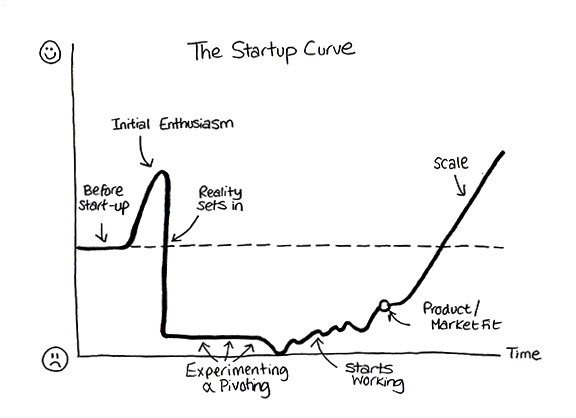
The Growth Equation
Acquisition x Activation x Retention x Churn x Resurrection x Monetization = 🌱
Learn more here.
The Value Equation

Learn more here.
The Entrepreneur, The Manager, and The Technician.
“If your business depends on you, you don’t own a business— you have a job. And it’s the worst job in the world because you’re working for a lunatic!” - Michael Gerber in The E-Myth Revisited
Most business owners make the fatal mistake of working in their business rather than on their business.
“Millions of people in this world can build software. A fractional subset of those can build software and convince people to buy it.” - Rob Walling in Start Small, Stay Small
“The fact of the matter is that we all have an Entrepreneur, Manager and Technician inside us. And if they were equally balanced, we’d be describing an incredibly competent individual. The Entrepreneur would be free to forge ahead into new areas of interest; The Manager would be solidifying the base of operations; and The Technician would be doing the technical work. Each would derive satisfaction from the work he does best, serving the whole in the most productive way. […] The Entrepreneur is the visionary in us. […] The managerial personality is pragmatic. Without The Manager there would be no planning, no order, no predictability. If the Entrepreneur lives in the future, The Manager lives in the past. Where The Entrepreneur craves control, The Manager craves order. […] The Technician is the doer. ‘If you want it done right, do it yourself’ is The Technician’s credo. The Technician loves to tinker. Things are to be taken apart and put back together again.” - Michael Gerber in The E-Myth Revisited
Chefs vs. Cooks
A chef invents recipes, puts new things together, creates new dishes. A cook follows recipes and does things that have been done before.
“The chef reasons from first principles, and for the chef, the first principles are raw edible ingredients. Those are her puzzle pieces, her building blocks, and she works her way upwards from there, using her experience, her instincts, and her taste buds. But what all of these cooks have in common is their starting point is something that already exists. Even the innovative cook is still making an iteration of a burger, a pizza, and a cake.”
Learn more here.
Sitcom Startup Ideas
“Imagine one of the characters on a TV show was starting a startup. The writers would have to invent something for it to do. But coming up with good startup ideas is hard. It’s not something you can do for the asking. So (unless they got amazingly lucky) the writers would come up with an idea that sounded plausible, but was actually bad. The danger of an idea like this is that when you run it by your friends, they don’t say “I would never use this.” They say “Yeah, maybe I could see using something like that.” Even when the startup launches, it will sound plausible to a lot of people. They don’t want to use it themselves, at least not right now, but they could imagine other people wanting it. Sum that reaction across the entire population, and you have zero users.” - Paul Graham
The Idea Maze
“Good startup ideas are well developed, multi-year plans that contemplate many possible paths according to how the world changes.” - Chris Dixon
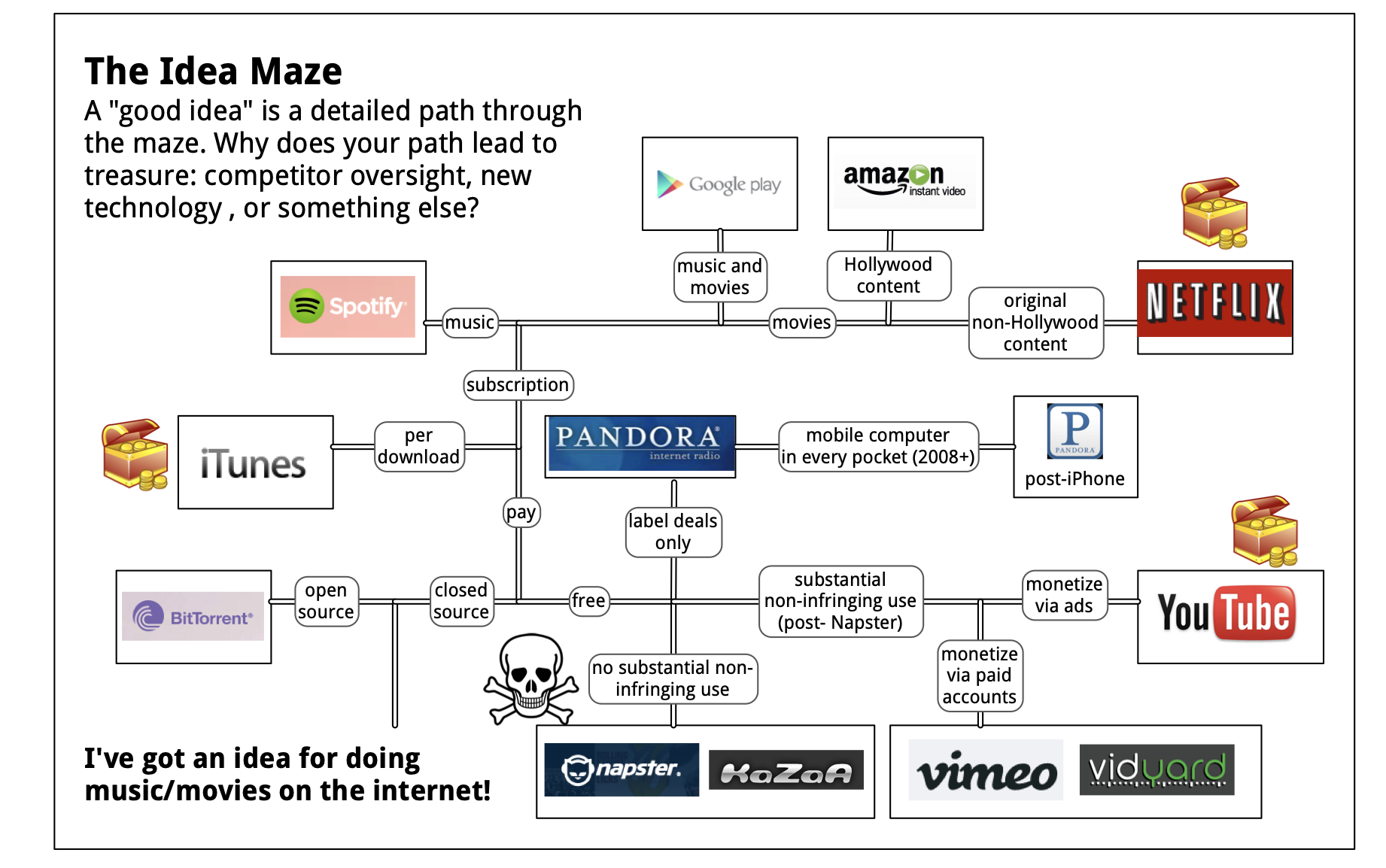
Image Credit: Balaji Srinivasan
Fuckarounditis
Fuckarounditis is a behavioral disorder characterized by a complete lack of real-world progress, despite significant amounts of time invested. Fuckarounditis most commonly manifests itself as an intense preoccupation with designing logos, printing business cards, and dreaming up infrastructure that scales. Fear of launching and marketing is another distinguishing trait.
Doing things that don’t scale or activities that require overcoming The Resistance are either completely lacking or misapplied
(free after Martin Berkhan)
The Resistance
The Resistance is a force in your life that is there to try to stop you from your goals.
It’s a term coined by Steven Pressfield in his book The War of Art to define the internal forces that oppose all forms of creativity.
Everyone experiences The Resistance. But the one thing successful people understand that other’s don’t is that you can apply a simple Jiu-Jitsu trick to turn The Resistance into a positive force in your live.
Instead of stopping whenever The Resistance shows up, you can embrace it by treating it as a compass that helps you figure out what direction you should be moving in. The most progress is usually found in directions where you experience the biggest Resistance.
Viral Emotions
Viral content is about emotion not information. If you want to create content that gets spread wide and far you should spend a lot of time thinking about what viral emotion you want to trigger with it. The most successful content creatores reverse engineer the emotion they want the audience to feel.
List of viral emotions:
- WOW: that’s amazing!
- LOL: that’s so funny
- FINALLY: someone said it!
- WTF: that pisses me off!
- YAY: that’s great news!
- AWW: so cute
- HAHA: so true!
- EPIC: trick shots
- NSFW: that’s crazy!
- OHH: now I get it!
There is oftentimes a lot of room even after you created content to pick a hook (first tweet in a thraed on Twitter, article headline, YouTube thumbnail) that triggers a specific emotion.
Lear more here
The one sentence persuasion course
“People will do anything for those who encourage their dreams, justify their failures, allay their fears, confirm their suspicions, and help them throw rocks at their enemies.” - Blair Warren
A winner is someone who can build snowmobiles
Think of four seemingly unrelated mechanical systems:
- a set of snow skis,
- a boat with an outboard motor,
- a bicycle,
- an earthmover.
Now try to mentally deconstructing these into their component parts and selectively re-combining parts from each to for a new useful “whole” that would not otherwise exist.
If we discard the bindings and poles from the snow-skis, retaining only the “boards”, from the outboard boat retain only the gasoline-powered motor, from the bicycle only the handlebars, and from the earthmover, a tread, we can recombined these concepts (the functions of the different parts) to form… a snowmobile!
John Boyd liked to separate people into two types: those who could conceive and build snowmobiles, and those who couldn’t.
“A loser is someone (individual or group) who cannot build snowmobiles when facing uncertainty and unpredictable change; whereas a winner is someone who can build snowmobiles and employ them in appropriate fashion, when facing uncertainty and unpredictable change.” - John Boyd
Reality has a surprising amount of details
Everyone underestimates how much complexity is hidden beneath the surface of even the most trivial things like a can opener. Everyone feels confident to draw a diagram or write out an explanation how a can opener works. But if you’re actually trying to do this and then read a description of how a can opener actually works or look at this diagram, you will quickly notice how naive your understanding really is.
The same phenomenon occurs when it comes to businesses. On the surface many business models are trivially easy to understand. Hubspot makes software to send emails to your customers. But why then, did it take them hundreds of iterations until they found that specific sweetspot with product/market fit? And why does a company like Google or Twitter need thousands of employees? Hosting and maintaining website is not that hard, right? (See the discussion here for examples.)
Read more here, here, and here.
The Product Death Cycle

In terms of a growth curve, it looks similar to this:

Read more here.
Moats
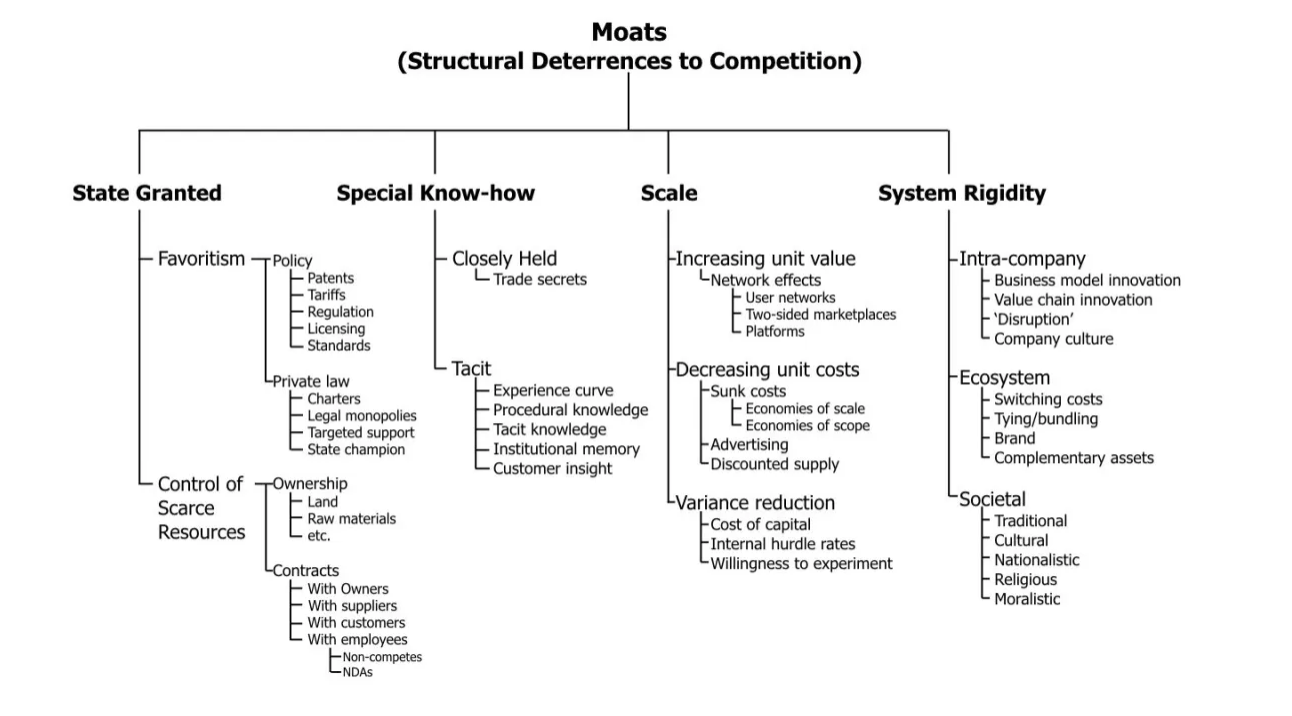
“Value is created through innovation, but how much of that value accrues to the innovator depends partly on how quickly their competitors imitate the innovation. Innovators must deter competition to get some of the value they created. These ways of deterring competition are called, in various contexts, barriers to entry, sustainable competitive advantages, or, colloquially, moats.” - Jerry Neuman
Read more here.
Ideas are Force Multipliers
“Good ideas are like Nike sports shoes. They may facilitate success for an athlete who possesses them, but on their own they are nothing but an overpriced pair of sneakers. Sports shoes don’t win races. Athletes do.” – Felix Dennis
Bad ideas can succeed with the right execution.
- How about a new soft drink that tastes considerably worse than Coke, comes in a much smaller can, and costs twice as much? Definitely a bad idea. And still Red Bull generates billions of dollars in revenue.
- How about a comic strip that is literally a bunch of stick figures? It will be called XKCD and have no discernable characters. Another comically bad idea and still XKCD is the most viewed comic on the Internet.
On the flipside, even the best idea that can fail if the execution is done wrong.
- Tom Cleveland had the following brilliant startup idea: use a structured database of clinical trials to provide simple, practical answers to common medical questions. Everyone agreed that this is a brillant idea. But nevertheless it failed within less than a year.
Hence Derek Sivers suggests to consider the following numbers:

The outcome is always the result of these two factors. A brillant idea with no execution is worth maybe around $20. A good idea with good execution is worth $1,000,000, and only when a brilliant idea is paired with brilliant execution, you end up with a billion dollar company.
Categories converge
“Categories tend to converge on value props, features, messaging, and even design over time. It’s why every SaaS website looks exactly the same. This means you need to reinvent yourself on a consistent cycle. When a category converges, there tends to be an audience looking for something completely different. One of many ways to find this open space is to ask what the opposite is.”* - Brian Balfour
The Law Of Shitty Clickthroughs
“Over time, all marketing strategies result in shitty clickthrough rates.” - Andrew Chen
The first banner ad ever had a clickthrough rate of 78%. In 2021, the average varies between 0.05%-0.16%.
The key corollary is that most of the rewards of marketing channels go to early adopters.
For example GymShark was able to build a huge brand using influencer marketing before the term existed. Similarly, people like Sahil Bloom built huge personal brands on Twitter leveraging the new thread feature. Now both of these channels are saturated and it’s much harder to do what they did.
The pattern: A new channel becomes available (e.g. TikTok ads or influencer marketing) and fast-movers start milking it. Then once the channel becomes saturated, they start teaching others what they discovered while they simoultaneously start moving on to the next channel.
Startups take off because the founders make them take off
“One of the most common types of advice we give at Y Combinator is to do things that don’t scale. A lot of would-be founders believe that startups either take off or don’t. You build something, make it available, and if you’ve made a better mousetrap, people beat a path to your door as promised. Or they don’t, in which case the market must not exist. Actually startups take off because the founders make them take off… The most common unscalable thing founders have to do at the start is to recruit users manually. Nearly all startups have to. You can’t wait for users to come to you. You have to go out and get them.” - Paul Graham in his essay Do Things that Don’t Scale
The Dunning-Kruger Curve
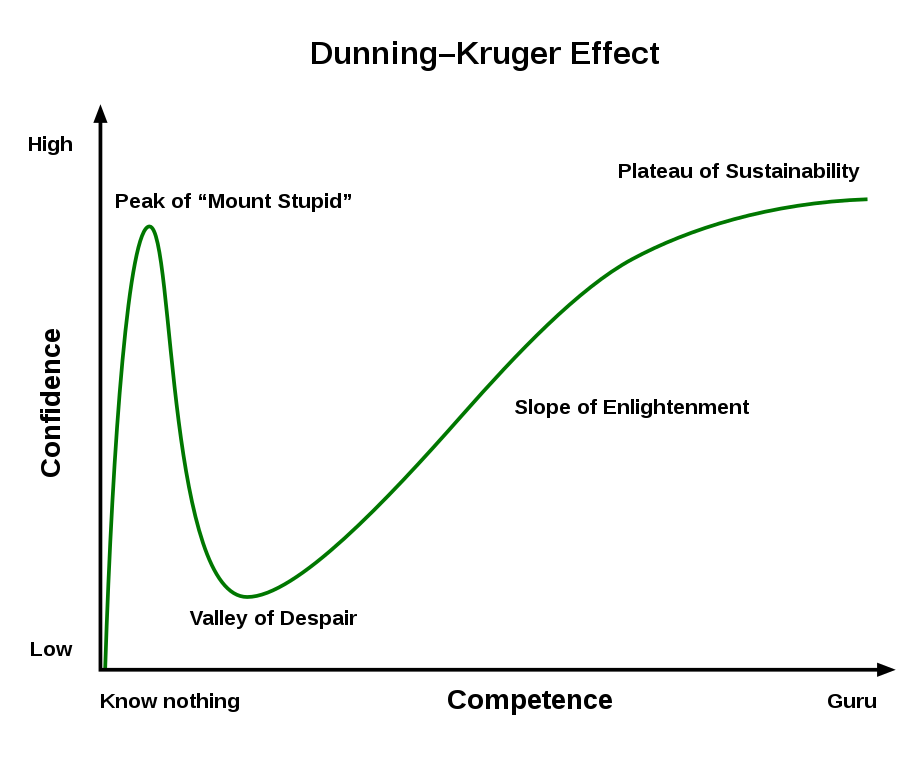
Image Credit: Wikipedia
Product Market Fit
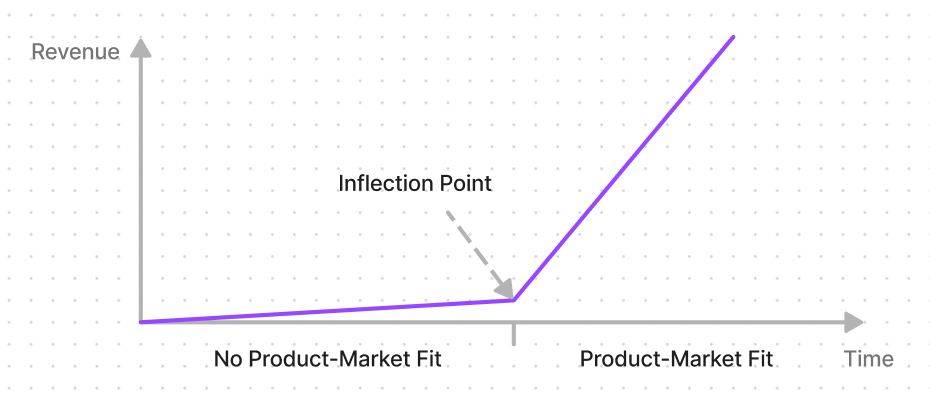
X for Y Startups
People love describing startups as “X for Y”. Facebook for X, Uber for X. Superhuman for X…
“This is a really common format to describe startup ideas because it accomplishes a couple things all at once: First, it positions you against something successful. Second, it both conveys a lot of information and also doesn’t — when someone who hears the idea, it’s like a short puzzle to solve to try and understand what it might mean. And yet, as a one-liner, it begs for interactivity, so that people will ask more.”
Read more here.
Constrains breed Creativity
Most people struggle when they’re asked to write down three ideas.But if ask you to come up with two product ideas that would help local bakerys attract more customers, I bet you could do it.
Writing an essay is a hard for most people. But writing 300 words about how the rise of AirBnb is very doable (with a bit of research).
When I ask you to tell a joke, it’s kind of hard. But when I ask you to tell a “knock-knock joke”, it’s kind of easier.
Constraint make it easier to be creative.
So the next time you’re struggling to come up with ideas, add constraints. If you’re struggling to come up with answers, make the question more specific. If you’re struggling to come up with solutions, consider the problem in the context of all limits you’re operating within.
Market Risk vs. Technical Risk
“A mistake a lot of entrepreneurs make is to only focus on ideas that are definitely possible but have questionable product-market fit. These ideas have low technical risk but high product-market fit risk. I think more people should be doing the opposite: focus on ideas that are definitely valuable and questionably possible. In many ways, market risk is worse because you’re gonna do all the hard work of building the thing and no one wants it.” - Kyle Vogt as quoted by Shaan Puri
“Younger founders should take market risk (market that are small or doesn’t exist yet). Older founders should take execution risk (market is very clear & execution, expertise, and relationships are the differentiator).” - Eric Torenberg
Lateral Thinking

“The goal of the puzzle (left) is to link all 9 dots using four straight lines or fewer, without lifting the pen and without tracing the same line more than once. All such answers (one example shown right) require the solver to draw a line that extends outside of the “box” formed by the grid.” - Wikipedia
“Pretend you are driving a car in the middle of a thunderstorm and you happen upon three people on the side of the road. One of them is a frail old woman, who looks on the verge of collapse. Another is a friend who once saved your life. The other is the romantic interest of your dreams, and this is a once-in-a-lifetime opportunity to meet him or her. You have only one other seat in the car. Who do you pick up? There’s a good reason to choose any of the three. The old woman needs help. The friend deserves your payback. And clearly, a happy future with the man or woman of your dreams will have an enormous long-term impact on your life. So, who should you pick? The old woman, of course. Then, give the car keys to your friend, and stay behind with the romantic interest to wait for the bus!” - from Smartcuts by Shane Snow
See also, the Candle Problem.
Quantity Leads to Quality
“A ceramics teacher announced on opening day that he was dividing the class into two groups. All those on the left side of the studio, he said, would be graded solely on the quantity of work they produced, all those on the right solely on its quality. His procedure was simple: on the final day of class he would bring in his bathroom scales and weigh the work of the “quantity” group: fifty pound of pots rated an “A”, forty pounds a “B”, and so on. Those being graded on “quality”, however, needed to produce only one pot — albeit a perfect one — to get an “A”. Well, came grading time and a curious fact emerged: the works of highest quality were all produced by the group being graded for quantity. It seems that while the “quantity” group was busily churning out piles of work – and learning from their mistakes — the “quality” group had sat theorizing about perfection, and in the end had little more to show for their efforts than grandiose theories and a pile of dead clay.”
Read more here.
Originality through Imitation.
Copying texts by great author by hand is an effective way to improve the quality of your writing. Hunter S. Thompson, for example, once hand-wrote every word of the Great Gatsby. Ben Franklin spent years copying newspaper articles.
You don’t learn a new musical instrument by writing your own songs. You learn other people’s songs. Then, after mastering and finding what you like, you develop your own voice using the patterns you noticed in copying others.
And many startups start as rather weak of imitations of existing businesses and then slowly iterate their way towards a unique value proposition.
Read more here.
The ORB Framework
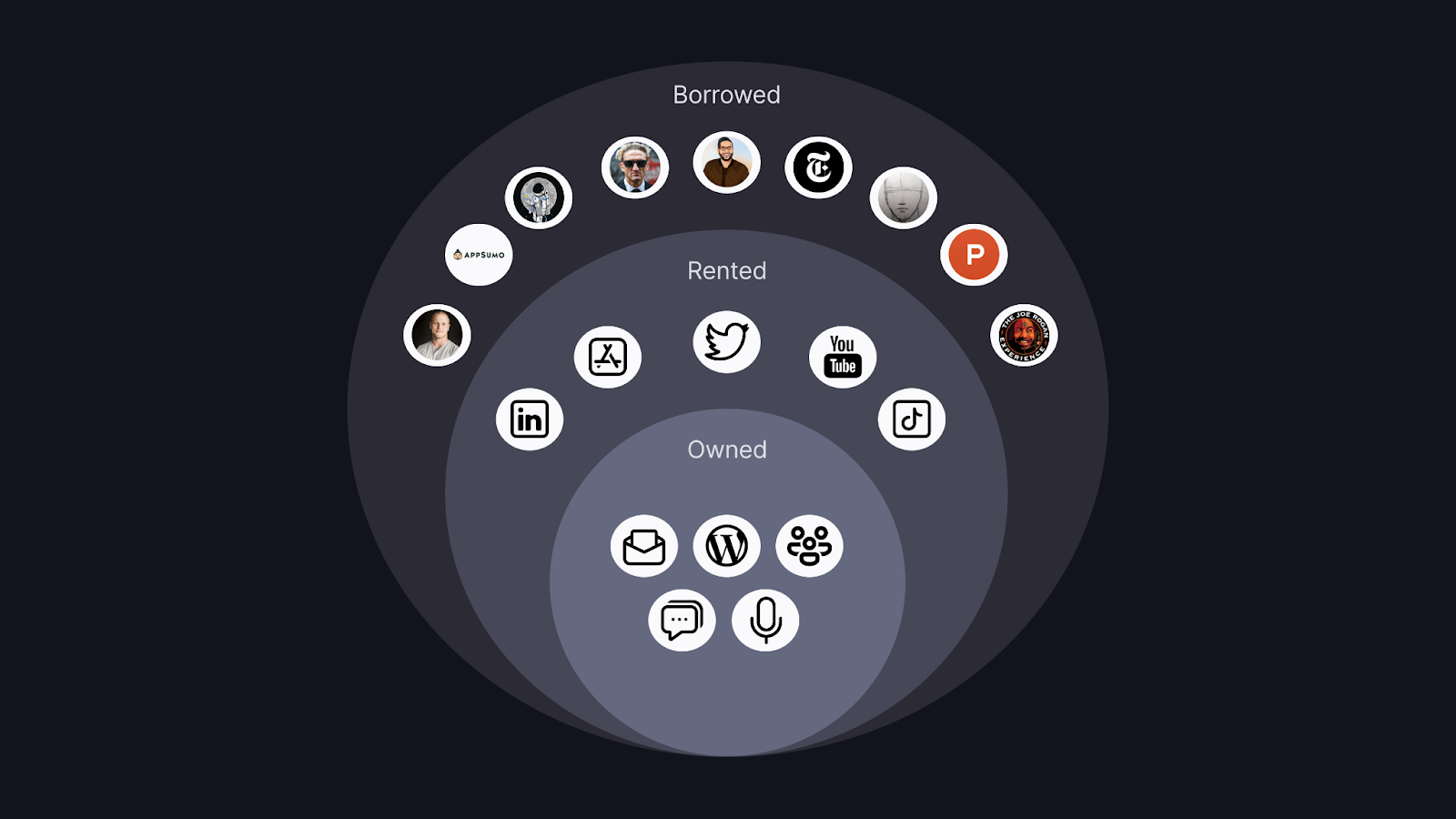
“Marketing strategies and tactics can be broken down into three main categories: Owned, Rented, and Borrowed. In other words, you have lines of communications to an audience that you either own, rent, or borrow.”
Read more here.
There are no bad ideas, only early ideas
“There are no bad ideas. There are only early ideas… They’ll all happen. I’ve become convinced…Every smart person that comes in here with a crazy idea, it’s all going to happen at some point. They will all happen. It’s just a question of when.”- Andreessen
There was a board game that was Monopoly for failed 90s ideas. The “stupid” failed ideas were: social networking & games, reviews & group discount buying. Good ideas pan out eventually.
Shape Yourself Like A “T”
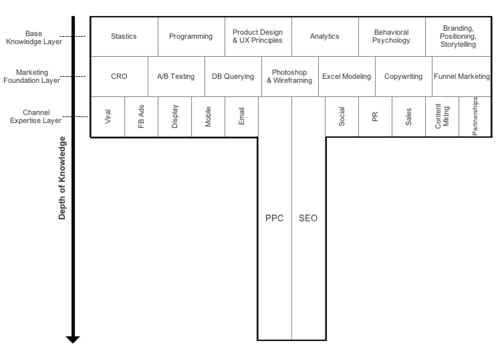
“Go broad by knowing the basics including pros/cons of most channels. Then choose to go really deep on a couple channels. Generalists are useless in most work environments. As an expert in certain areas you will be able to build a brand around yourself and stand out from the crowd.” - Brian Balfour
The founder is the surfer
- the founder is the surfer
- the product is the surfboard
- the market is the wave
The wave matters most. A good surfer on a bad wave is screwed.
Read more here.
Functioning complex system are not designed but emerge
“A complex system that works is invariably found to have evolved from a simple system that worked. The inverse proposition also appears to be true: A complex system designed from scratch never works and cannot be made to work. You have to start over, beginning with a working simple system.” - John Gall in his book Systemantics
Working Backwards
Working Backwards is an approach popularized by Amazon. Employees start projects by writing the press release and FAQs.
The same approach can be applied in many variations for all kinds of projects.
For example, witers can work backwards too. Write the tweet people will use to share your article before you write the article itself.
Read more here.
Avoid the Middle
In many areas it’s a lot smarter to focus on the extremes than trying a more balanced approach.
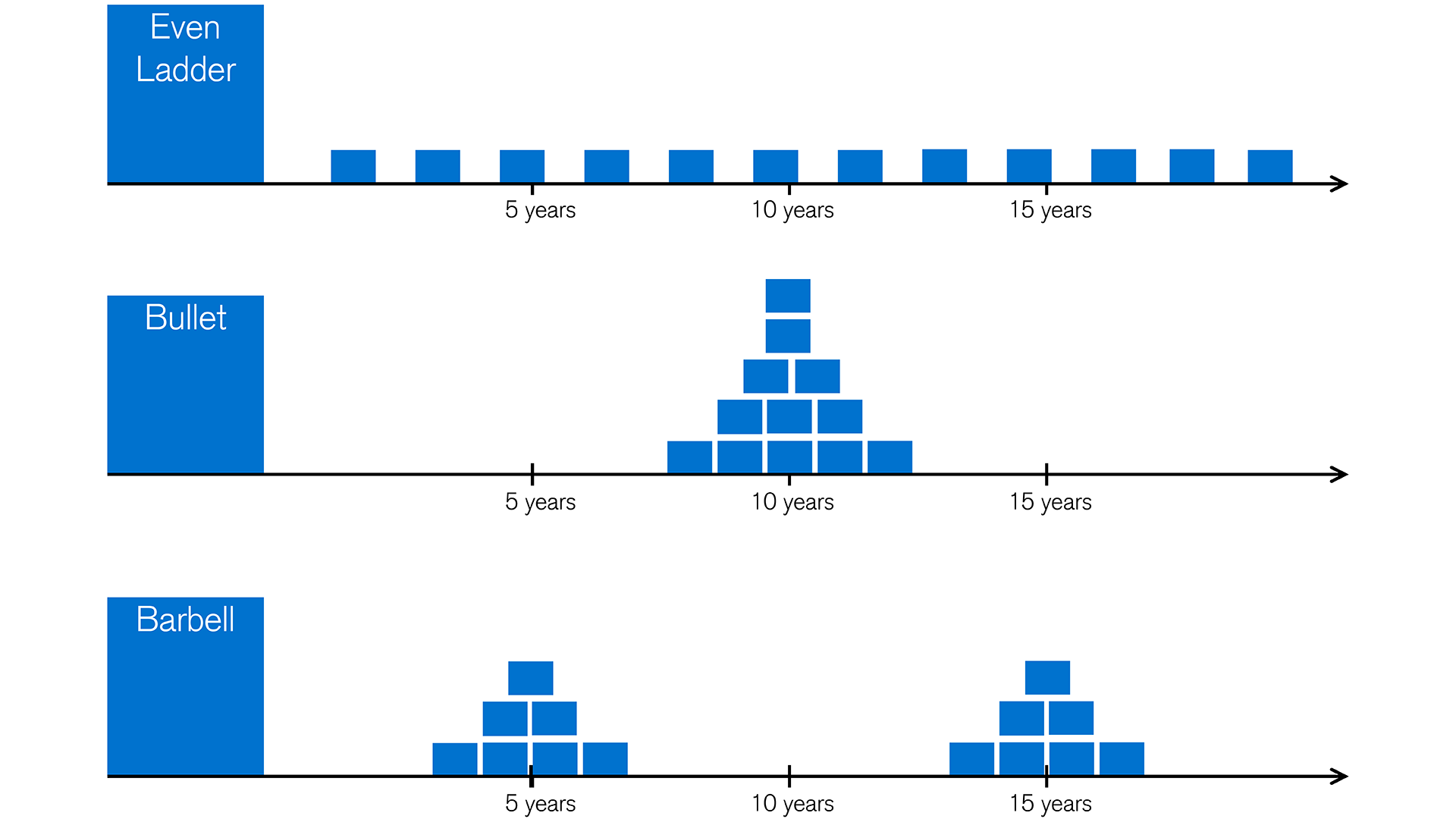
For example, learn from cheap books and free articles or high-end premium courses that offer 1-1 support and live QnA sessions. Anything in-between is a waste of money.
When comes to businesses, do tiny experiments or go all in. Anything in-between is a waste of time.
Work like a lion. Do short bursts of super intensive work. Then rest completely. This has a much higher ROI than working all the time at 30% of your capabilities.
The Eisenhower Matrix
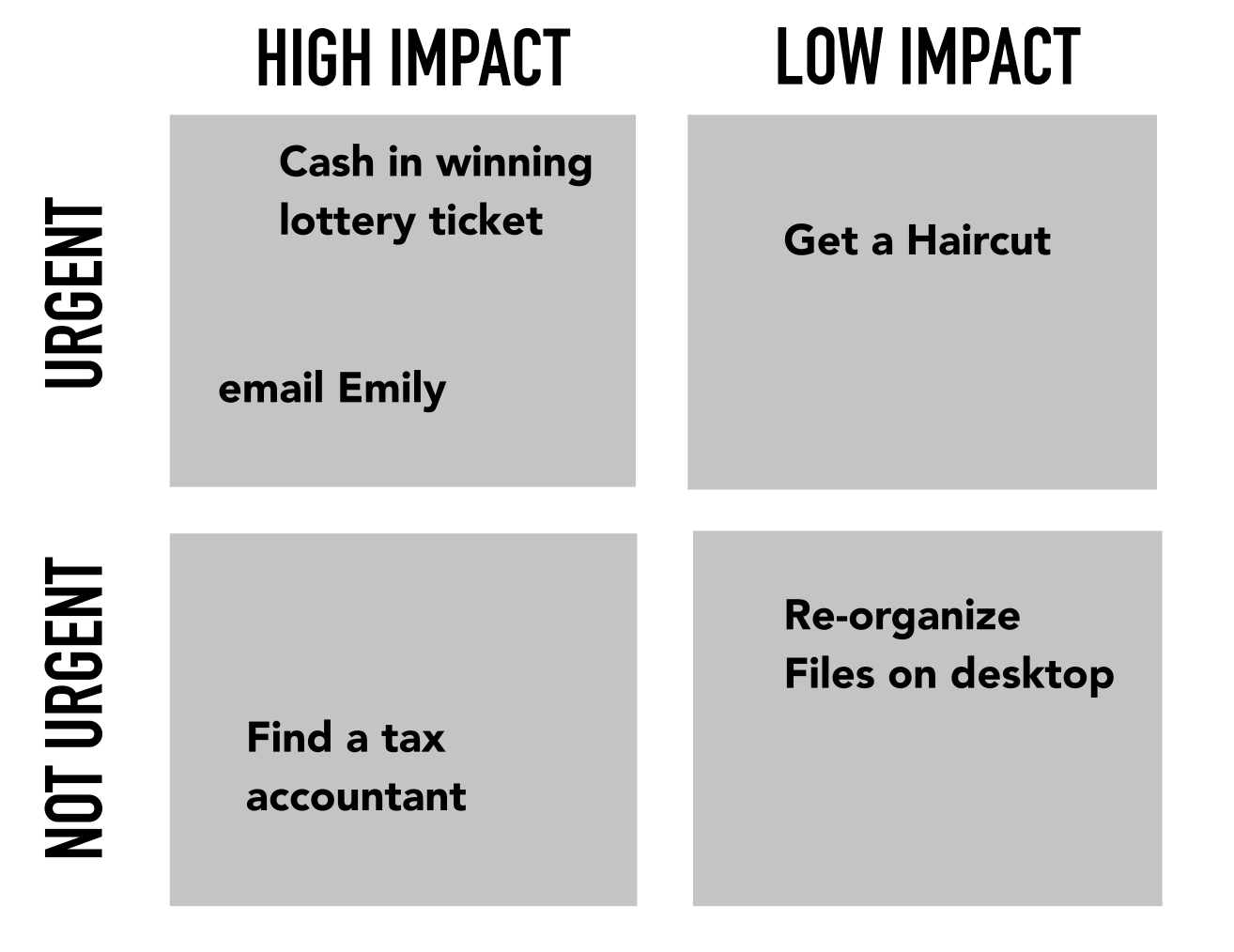
Prioritize tasks based on how important and how urgent they are. Then:
- Unimportant/Not Urgent quadrant tasks are dropped
- Unimportant/Urgent quadrant tasks are delegated
- Important/Not Urgent quadrant tasks get an end date and are done personally
- Important/Urgent quadrant tasks are done immediately and personally
Sell the Experience and Benefits, not the Features
“Your customers don’t care about you. They don’t care about your product or service. They care about themselves, their dreams, their goals. Now, they will care much more if you help them reach their goals, and to do that, you must understand their goals, as well as their needs and deepest desires.” - Steve Jobs
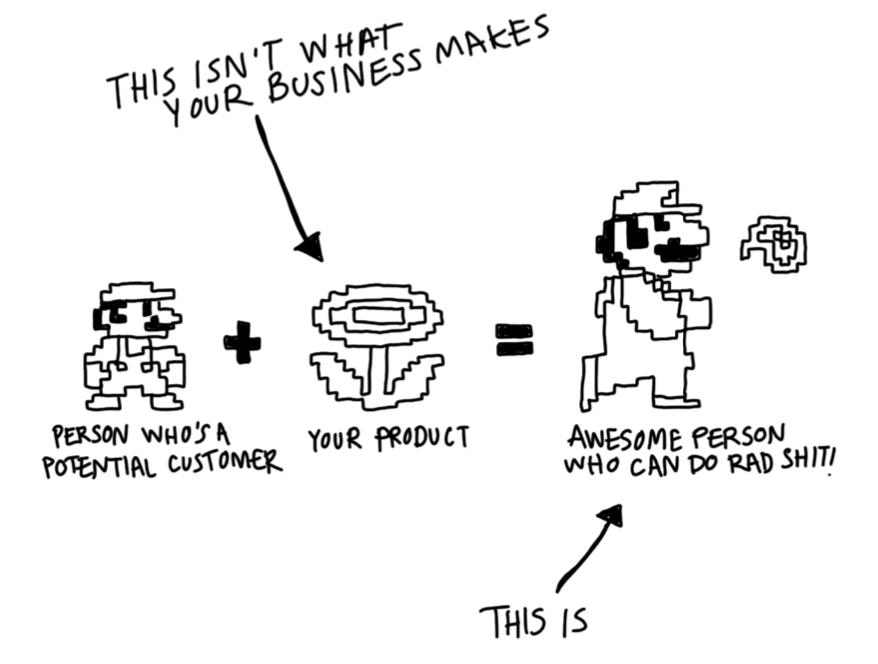
“Don’t sell the plane ticket, sell the vacation”
What most people do: talk endlessly about themselves, their product and its features.
What they should do instead: tell customers how awesome they will be after using your product
Read more here.
Impatience with action, patience with results
Always focus on taking massive action. Inspiration is perishable. Hence it’s important to act on it immediately. Never leave the scene of a decision without an action.
But don’t stress out if you don’t get results right away. Good things take time.
Focus on process-driven metrics not outcomes
People like to set goals like “I want to be earn a millon dollar this year” or “I want to grow my audience to 10,000 followers on Twitter”. But these outcomes are to a large part outside of your control and hence this is a recipe for unhappiness.
It’s smarter to focus on things you entirely control. Something like “Launch Project and Execute on Marketing Plan: email 50 podcasts and 50 journalists” or “Make 50 sales calls per week.” You control those things.
Startups = Momentum
Startups are all about momentum. The best founders know how to take momentum and turn it into lightning in a bottle.
Read more here.
Incentives
“Never, ever, think about something else when you should be thinking about the power of incentives.” - Charlie Munger
To win at Twitter, start thinking like Twitter. They want to keep people on the platform (so they keep looking at more ads) for as long as possible. Hence they will punish you if you include external links in your posts.
Similarly, to win at SEO, start thinking like Google.
A winner, is someone who can build snowmobiles
“Imagine that you are in Florida riding in an outboard motor boat, maybe even towing water skiers. Imagine that you are riding a bicycle on a nice spring day. Imagine that you are a parent taking your son to a department store and that you notice he is fascinated by the toy tractors or tanks with rubber caterpillar treads.Now imagine that you pull the skies off but you are still on the ski slope. Imagine also that you remove the outboard motor from the motor boat, and you are no longer in Florida. And from the bicycle you remove the handlebar and discard the rest of the bike. Finally, you take off the rubber treads from the toy tractor or tanks; this leaves only the following separate pieces: skis, outboard motor, handle bars and rubber treads.What emerges when you pull all this together? A snowmobile!A winner, is someone who can build snowmobiles.” - John Boyd
Bottlenecks
Every system is limited by various constraints but will, by definition, have one constraint tighter than all the others.
The implication of the Theory of Constraints, as Eliyahu Goldratt describes in The Goal, is that the performance of any system is fundamentally limited by the output of the bottleneck. Thus, no change to the system will result in overall improvement unless that change addresses the bottleneck.
Productivity Math
An hour at the gym nets you more than an hour of productivity throughout the rest of your day.
The same applies to meditation, recharging with music, and getting 8 hours of sleep instead of 7 hours.
The time it takes to do these things literally pays for themselves.
They give you more energy in the evenings which otherwise would’ve been useless. You’ll be more focused, able to accomplish more and have a better time in the process.
Operations
“My definition of operations: the coordination of tactics over time. Tactics are individual actions. For running: long runs, short runs, speed work, walking, leg strengthening, stretching, hydration, foam roller, keeping your stats and making a running plan, active recovery, cross-training. Any of those can be good, but you can do a lot of damage by over-training or not healing enough. Too much unbalanced action and you can break down; not enough cohesion among your actions and you get middling trivial gains. That’s where operational skill comes in. It’s about those seemingly basic but utterly critical skills: scheduling, planning things out, communicating, checking and making adjustments periodically, etc. Much of our exploration of Upstream Effects has explored ideas for having better operations, but going a step further, I encourage you to see this as a discipline and train in it. It’s as simple as saying, “Ok, how do I ensure that all the right action happens over time? Over the next weeks, months, and even a year?” - Sebastian Marshall
Reasoning from First Principles
“I think generally people’s thinking process is too bound by convention or analogy to prior experiences. It’s rare that people try to think of something on a first principles basis. They’ll say, “We’ll do that because it’s always been done that way.” Or they’ll not do it because “Well, nobody’s ever done that, so it must not be good.” But that’s just a ridiculous way to think. You have to build up the reasoning from the ground up—“from the first principles” is the phrase that’s used in physics. You look at the fundamentals and construct your reasoning from that, and then you see if you have a conclusion that works or doesn’t work, and it may or may not be different from what people have done in the past.” - Elon Musk
Read more here.
Nobody ever got fired for buying IBM
Most people stick with known and trusted brands even if that brand is 10x more expensive than suitable alternatives or inferior to cheapter solutions.
Big winners pay for so many experiments
“Outsized returns often come from betting against conventional wisdom, and conventional wisdom is usually right. Given a ten percent chance of a 100 times payoff, you should take that bet every time. But you’re still going to be wrong nine times out of ten. We all know that if you swing for the fences, you’re going to strike out a lot, but you’re also going to hit some home runs. The difference between baseball and business, however, is that baseball has a truncated outcome distribution. When you swing, no matter how well you connect with the ball, the most runs you can get is four. In business, every once in a while, when you step up to the plate, you can score 1,000 runs. This long-tailed distribution of returns is why it’s important to be bold. Big winners pay for so many experiments.” - Jeff Bezos
Imitate then Innovate
“There are billions of different combinations of the moving parts a business consists of and almost all of them don’t work. That’s the problem with zero to one ideas. You have to be lucky enough to find a functioning combination before you run out of money. The odds are definitely not in your favor, no matter how smart you are. Compare this to the situation if we focus on “one plus epsilon” ideas. Here, we simply copy an existing and functioning machine and then focus on modifying one or maybe two of the moving parts. “
Ideas are like avocados
“Ideas are like avocados. You can’t let ‘em sit around for too long. Here’s the hack to cut your time in half. Don’t make long lists. For example: Imagine you’re trying to find sponsors for your event. Don’t make a list of 25 potential sponsors in a spreadsheet. Take the first name - and call them immediately (even if you don’t know what to say). Action, not lists! Lists are just a fancy form of procrastination” - Shaan Puri
“Inspiration is perishable - act on it immediately.” - Naval Ravikant
Dream 100
You can think of the Dream 100 as the 100 people that stand between you and your dream customers online — those could be podcast host, blog writer, newsletter authors, Facebook group owners, YouTubers, influencers, or pretty much anything else.
The idea is then to build relationships with each of these 100 people so that you’re “digging a well” before you need it.
Then when you’re launching something new, you reach out to them or send them your product for free hoping that they will share it on their platforms.
The framework is also useful whether you’re trying to build an audience on Twitter or grow a Newsletter or blog. The key is always to remember that long-term success is all about your relationships to other people.
You might be able to get short-term boosts using automated solutions, but eventually these will fade away.
What stays are your relationship to people. It’s people who link back to your blog and retweet your tweets.
And the best way to start is by identifying the 100 people of influence that would help you the most if you had a genuine relationship with them.
Skyscrapers vs. Strip Malls
“a lot of creators want to build strip malls. And what I mean by that is that you get 5,000 subscribers on an email list, you know, ‘okay, let me sell them this.’ And a certain number of people buy that. ‘Okay, let me add this other thing.’ And a certain number of people buy that. ‘Okay, now, let me add this third thing.’ You have all of these different ‘properties’ built out on your real estate, and look, you’re earning a great living. You know, we’re now at $50,000 or $100,000 a year from that. But it’s all spread. An example of someone building a skyscraper, and I quote them a lot, is James Clear. For years, he was like, ‘I’m not going to monetize my email list. I don’t care about making money from it, how do I keep writing content and buildings, build the biggest possible list.’ …He got to the point where he was like, ‘Okay, I do need to make some money for this…’ And so once a quarter, he would teach a habits workshop. And he would promote that workshop, I think the first one made $20,000, which was quite a lot. And by the time he stopped doing them, they’re making like $200,000 apiece. But that was the only thing he allowed himself to do. Everything else went into building the skyscraper of the email list, taller and taller. And the result is that he now has an email list of over a million people.” - Nathan Barry
PS: If you're interested in following my journey, sign up below:
